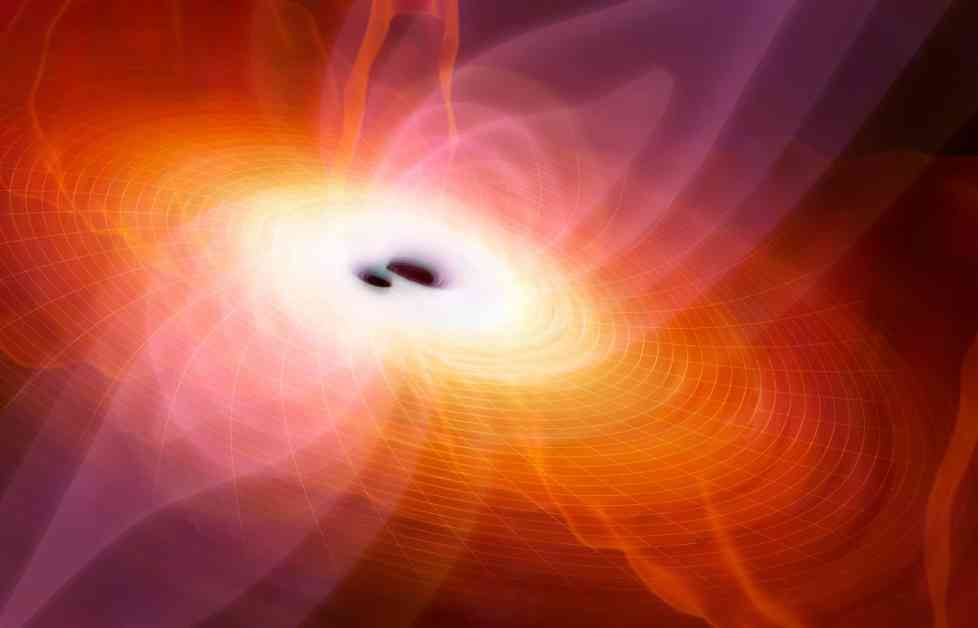In September 2015, a vibration lasting just one-fifth of a second changed the history of physics. It was the first direct detection of gravitational waves — perturbations in the geometry of space-time that move across the Universe at the speed of light. Astronomers say it was like gaining a new sense — as if, until 2015, they had only been able to ‘see’ cosmic events, and now could ‘hear’ them, too.
Since then, it has become almost a matter of daily routine to record the passage of gravitational waves at the two massive facilities of the Laser Interferometer Gravitational-wave Observatory (LIGO) in Louisiana and Washington state, along with their sibling Virgo observatory near Pisa, Italy. The detection of gravitational waves has provided new ways to explore the laws of nature and the history of the Universe, including clues about the life story of black holes and the large stars they originated from.
For many physicists, the birth of gravitational-wave science was a rare bright spot in the past decade. Other promising fields of exploration have disappointed: dark-matter searches have kept coming up empty-handed; the Large Hadron Collider near Geneva has found nothing beyond the Higgs boson; and even some promising hints of new physics seem to be fading. “In this rather flat landscape, the arrival of gravitational waves was a breath of fresh air,” says Caprini.
All of the more than 100 gravitational-wave events spotted so far have been just a tiny sample of what physicists think is out there. The window opened by LIGO and Virgo was rather narrow, limited mostly to frequencies in the range 100–1,000 hertz. But this is only one of many kinds of phenomena that are expected to produce gravitational waves.
Researchers are now working on several next-generation LIGO-type observatories, both on Earth and in space, such as the Laser Interferometer Space Antenna. Some of these could be sensitive to gravitational waves at frequencies as low as 1 Hz. Physicists are also exploring entirely different techniques to detect gravitational waves, such as watching pulsars and measuring quantum fluctuations, to catch a much wider variety of gravitational waves with frequencies in the megahertz to nanohertz range.
One viable alternative to interferometers that entered the game last year is the pulsar timing array (PTA). Radio astronomers have been attempting to use the entire Galaxy as a gravitational-wave detector by monitoring dozens of neutron stars called pulsars. The PTA technique began to bear fruit in 2023, with four separate collaborations unveiling tantalizing hints of a pattern expected from a random ‘stochastic background’ of gravitational waves caused by supermassive black-hole binaries.
Cosmologists are now doubling down on the idea of detecting gravitational waves in the cosmic microwave background (CMB) with powerful telescopes such as the Simons Observatory. The search for a specific ‘B mode’ pattern in the polarization of the CMB could provide evidence of gravitational waves produced by inflation, a quick burst of exponential cosmic expansion thought to have happened around the time of the Big Bang.
Detecting such frequencies could reveal mergers of black holes much more massive than those seen by LIGO. Atom interferometry is a nascent technique that could help close the gap just below 1 Hz by using atomic clocks to measure the time it takes for a laser pulse to travel between sets of atoms in a vertical pipe.
Other researchers are exploring ways of detecting gravitational waves with much smaller detectors, including the Levitated Sensor Detector (LSD) at Northwestern University and a resonant detector using sound waves in a Bose–Einstein condensate. These detectors could potentially detect extremely high-frequency gravity waves that some speculative theories predict.
A more radical proposal involves putting objects in two places at once using quantum crystal technology. This technique could potentially take gravitational-wave detection out of the hands of just a few large-scale labs. Together, these innovative detectors and methods are revolutionizing astrophysics and opening up new possibilities for understanding the mysteries of the cosmos.






